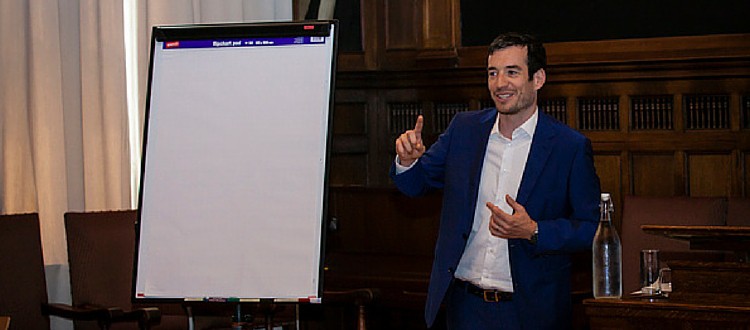The flipside of good leadership
Loosely speaking, improv is a form of theatre where the players create a situation in front of an audience in the hopes of generating laughs. Leadership, on the other hand, is the ability to take command of a situation, inspire trust and loyalty and help individuals and groups achieve things they wouldn’t be able to do on their own. To put it bluntly: one is silly and fun, and one is quite serious. What could they possibly have in common? Well, it has become apparent to me over the years that improv and leadership in fact draw on very similar skills. In fact, I would say that they use many of the exact same skills, and just apply them differently.
This was the premise of my opening keynote speech at the 2015 HUTAC Annual Conference, which I titled “The flipside of good leadership”. I wanted to show that some of the things we think may not have a place in ‘leadership’ are actually quite important. Not coincidentally, these attributes or approaches also happen to be things that are stressed in improv training.
Here are four elements of improvisation that can fruitfully be applied to other pursuits.
No single leader
In improv comedy there is no single ‘leader’. Everyone (when it is their ‘turn’) must step up and perform. And usually a ‘turn’ isn’t something made explicit; rather it is something that is ‘felt’. So that responsibility, rather than being assigned, is shared amongst the whole group. This creates more investment and less of the “well, it wasn’t my job” type of attitude. When an improv show is happening, all of the players take equal responsibility for both taking centre stage when that is required of them, and also making room for other players to shine when that is required. It’s a fine balance, but well worth the effort, as it means every participant is able to bring out their best.
Play
When faced with a big problem, we often tense up, get stressed, and make bad decisions. And the more serious an issue is, the less likely we are to solicit input and engage our creative thinking. But oftentimes some element of creativity and playfulness is exactly what is required. If an improviser hears a suggestion of “cheese” and uses that to inspire a scene about a family portrait photographer or a first date where the man keeps saying overly sweet and romantic things, the audience is surprised and delighted, but it’s just that the player has been training in a playful approach to ideas and concepts. It will pay dividends not just on stage but also in meetings and at home.
Risk
“A safe pair of hands” is a good thing; we want people we put in charge or entrust with some responsibility to be able to keep things running smoothly. But then, when we think about great innovators and inventors, people who inspire us and achieve remarkable things, they rarely – if ever – achieve fantastic results by toeing the line and maintaining the status quo. A little bit of risk, such as the risks that improv performers take as a part of their training and performances, helps those individuals become more comfortable with taking risks.
Awareness
We often imagine that good leadership is some nearly supernatural ability that comes from inside the leader. But oftentimes great leadership comes from highly sensitive people who are tuned into the feelings and attributes of the group and are able to facilitate their achievements. Leadership of this type is enhanced by an awareness of opportunities and risks in the environment. Viewed through this lens, it has very little to do with what it is the leader wants to accomplish and everything to do with the group as a whole, and the circumstances they find themselves in. This awareness and active listening is an instrumental part of improv.

